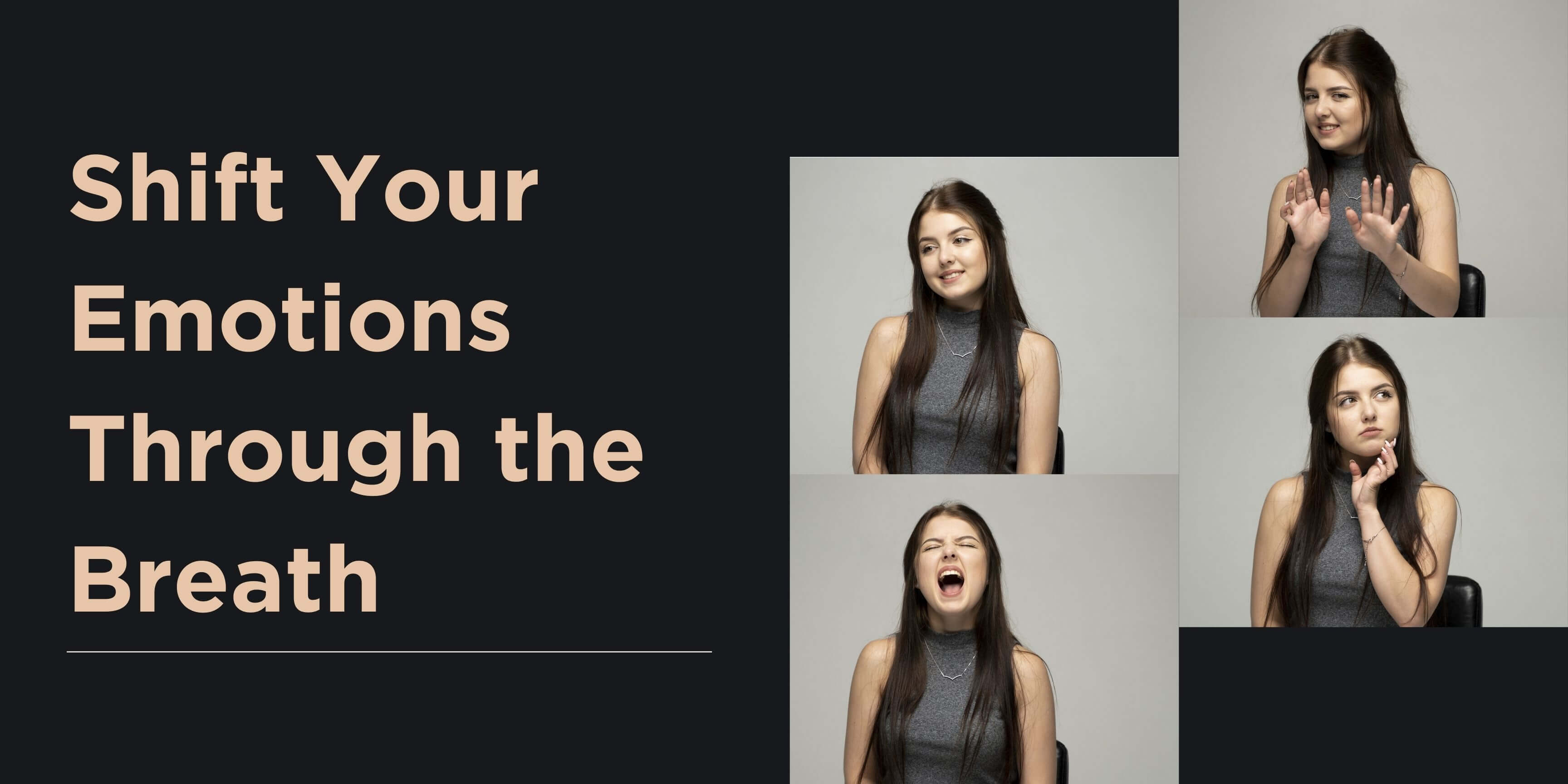Cambia tus emociones a través de la respiración
Cambia tus emociones a través de la respiración
Bethel Wagner, CBF, CBT, INHC 02 de mayo de 2023
La profundidad y el patrón de tu respiración afectan fuertemente cómo te sientes mental y emocionalmente en un momento dado. De hecho, cada emoción tiene su correspondiente patrón de respiración. Cuando aprendemos a notar estos patrones, podemos cambiar nuestro estado emocional en una dirección positiva mediante el uso consciente de nuestra respiración.

La profundidad y el patrón de tu respiración afectan fuertemente cómo te sientes mental y emocionalmente en un momento dado. Sí, lo leíste correctamente. Tu respiración y tus emociones están profundamente entrelazadas.
La mayoría de las personas respiran en piloto automático la mayor parte del tiempo.
Pero, ¿alguna vez te has detenido el tiempo suficiente para sintonizarte y notar cómo respiras naturalmente? ¿Respiras por la nariz o por la boca ? ¿Respiras hacia la parte superior del pecho o profundamente hacia el abdomen? ¿Cuántos ciclos de respiración realizas en un minuto? ¿Están su mandíbula, cuello y hombros relajados o tensos?
Cada respiración que tomas regula o desregula tu sistema nervioso. La respiración torácica rápida y superficial es un patrón basado en el miedo que pone al sistema nervioso en alerta máxima. Por otro lado, la respiración diafragmática lenta, profunda es un patrón basado en el amor que calma y alivia el sistema nervioso, indicando que todo está a salvo.
Cada emoción tiene un patrón de respiración correspondiente. Cuando aprendemos a notar estos patrones, podemos cambiar nuestro estado emocional mediante el uso consciente de nuestra respiración. En otras palabras, podemos elegir intencionalmente nuestro estado emocional.
A continuación se muestra una lista de emociones comunes y sus correspondientes patrones de respiración.
-
Conmoción, pánico, miedo: inhalaciones rápidas por la boca, a veces “respiración inversa” al aspirar el vientre hacia adentro al inhalar.
Un ejercicio interesante es notar cuál es tu emoción actual. A continuación, observe su postura, lenguaje corporal y forma de respirar. Luego elige una emoción específica a la que te gustaría cambiar y practica el patrón de respiración correspondiente. También ayuda adoptar una postura abierta y relajada. Por lo general, sólo se necesitan unos pocos ciclos de respiración para comenzar a sentir el cambio.
La belleza de este ejercicio es que puedes usarlo en cualquier lugar y en cualquier momento. Todo lo que se necesita son unos momentos de conciencia y la elección intencional de utilizar un patrón de respiración diferente.
Hacerlo puede desactivar una respuesta de estrés crónica o aguda en el cuerpo. Indica que es seguro y cambia el cuerpo y la mente a un estado de calma pero alerta. Nos sentimos seguros al interactuar con las personas y el mundo que nos rodea cuando encontramos este equilibrio. También nos sentimos seguros de reducir el ritmo y descansar cuando sea apropiado.
Es muy enriquecedor cuando las personas se dan cuenta de que pueden cambiar y gestionar sus emociones de forma saludable. No tienen que depender de la cafeína, el alcohol, el azúcar, los alimentos, las recetas u otras drogas para sentirse estables y felices. En cambio, pueden usar su conciencia y el poder de su respiración para conectarse con sus emociones y moverlas en una dirección positiva.

Artículos sobre respiración y oxígeno
-
Respiración
-
Oxígeno
- El moho podría estar en su hogar ahora mismo. ¿Estás en riesgo?
- Venza el estrés laboral de la manera correcta
- El mal aliento causa asma: ¡esto es lo que debe hacer!
- Respiración óptima, autismo y desarrollo cerebral
- ¿Por qué respirar mejor? El mal aliento te enferma o te enferma aún más. Aprenda a respirar mejor ahora
- Cura tus problemas respiratorios con ejercicios de respiración

Obtenga ayuda personal para mejorar su salud
y vitalidad.




